Climbing the iconic Table Mountain is not for the faint-hearted. More people die on Table Mountain than Mount Everest. Rocky cliffs, steep drops, puff adders, searing heat when the sun rises, yet there are many experienced guides to lead you safely up its 1088 metres. Formed over hundreds of millions of years, the Table Mountain National Park is the richest single floristic area on the planet.
1500 plant species are found on the mountain itself, including fynbos (Afrikaans meaning “fine bush”), scrubby vegetation consisting of proteas, restios, ericas and geophytes. South African flora features in so many of our gardens, perhaps unknowingly; geraniums and freesias, for instance, have their origins in fynbos.
On the eastern slopes of the Mountain lies one of Africa’s loveliest gardens, Kirstenbosch Botanical Garden, and from here one can reach the summit of the Mountain up a ravine called Skeleton Gorge.
But before you do that, you will need several hours to visit this very beautiful garden, established to conserve and promote South Africa’s diverse indigenous flora. Of course we all expect displays of proteas – King proteas are SA’s national flower and feature on their cricket jerseys.
There are plenty of Strelitzias :
and Agapanthus :
But there are vast areas to be explored – I was fascinated by the display of traditional medicinal plants and their uses, for example, Melianthus major (a staple foliage plant for garden designers) is a traditional cure for snakebites and swelling, though poisonous in itself.
There is a wonderful Tree Fern Dell, their unfurling branches casting welcome shade :
Cycads, those wonderful structural plants dating from the Jurassic Age, have an amphitheatre of their own, the finest collection I have seen, some now extinct in the wild. Very sadly, last month 24 cycads were stolen from Kirstenbosch, including 22 critically endangered Encephalartos latifrons. I don’t think anyone who steals from the very organisation dedicated to their survival, can call themselves a plant lover. It highlights again the need to know the provenance of what we buy.
Recently a new aerial Walkway was constructed in the Arboretum, which swirls and snakes through the tree canopy, adding an interesting new perspective.
Kirstenbosch is more than just a beautiful garden; it is part of a Nature reserve, protecting the natural beauty of the mountainside, the forest, the flora, fauna and birdlife.
The natural setting of this beautiful Botanical Garden is second to none.
Useful sites :
Moving on :
On Friday I move further north to the Lake of Stars Festival on Lake Malawi, though there will be one or two more posts on South African gardens in due course. I may however be without internet for a week or two, so apologies for late responses to you.
Best wishes, Lorna.


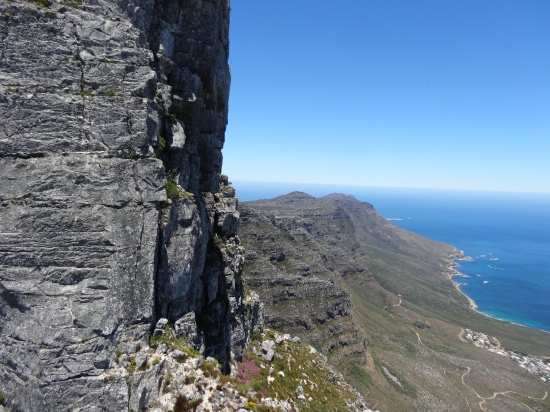
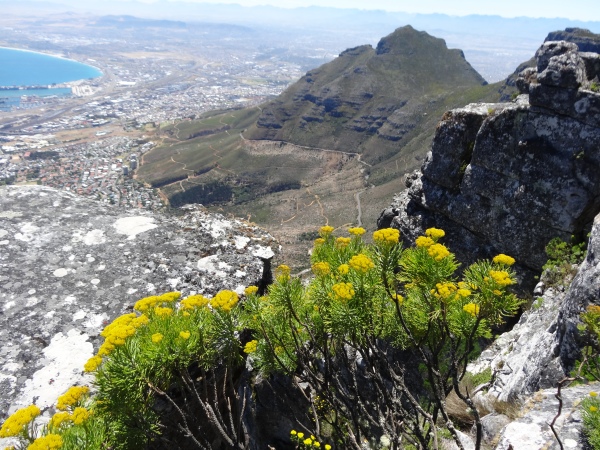

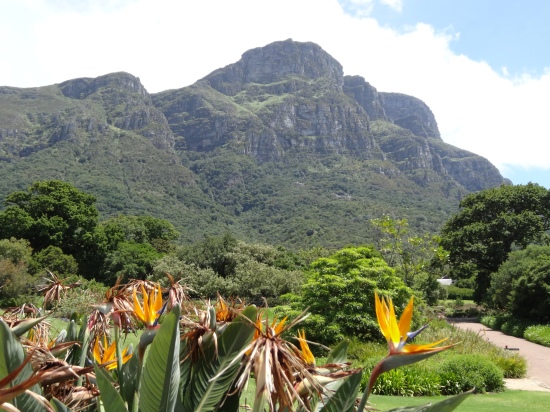
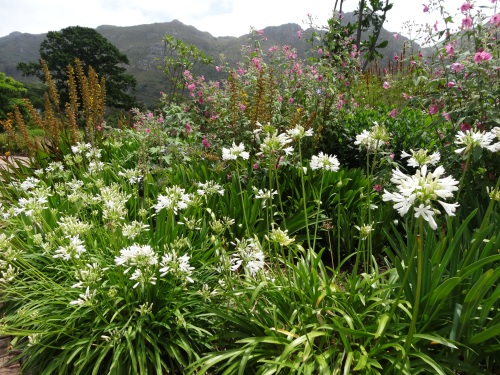


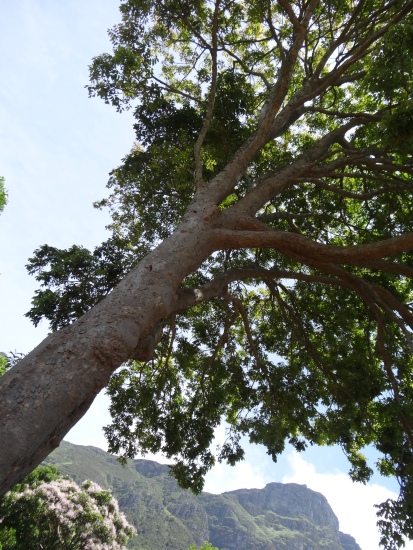
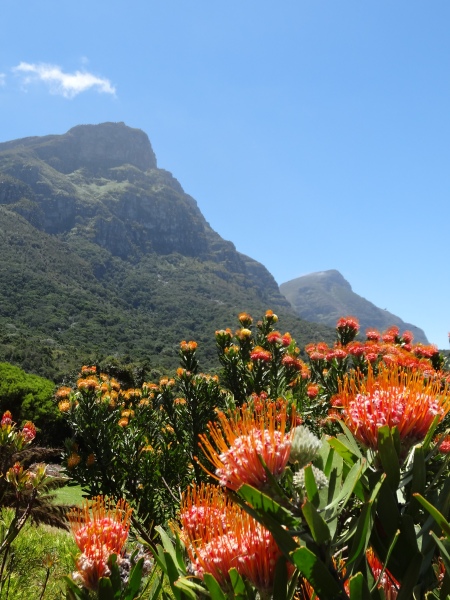
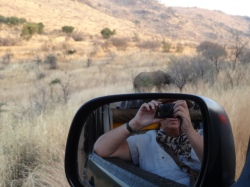
Wonderful post! It is interesting to see where our garden plants come from. Many of those we grow on the Gulf Coast. I was wondering about the rainfall in that botanical garden, it looks rather dry and we have generally subtropical rainfall here of about 49 inches annually.
LikeLike
SA has very varied climates & topography.
The Western Cape area (where Kirstenbosch is situated) has Mediterranean type weather with mild, rainy winter conditions, so it’s pretty green at the moment, say compared to the eastern part of the country which gets summer rainfall. Fynbos thrives on the poorer soil.
Up on the Highveld (Joburg) area there is no rainfall for many months in winter, (there has only been one Spring shower so far, the first rain in 5 months), and the temp sometimes drops below freezing. Aloes, Kniphofias etc do well here.
Yet the dry desert conditions of Namaqualand are ablaze with colour at the moment with indigenous Namaqua daisies.
One thing plants have learnt to do here is to adapt and thrive and each region has its own abundance.
Really glad you enjoyed the post – I continue to be amazed at the wealth of the flora here.
LikeLike
Stunning photos, Lorna, just lovely!
LikeLike
Many thanks Julie. It’s a very photogenic place! 🙂
LikeLike
The shot of the fern trees were amazing. I felt like I went back in time to some prehistoric place. The veiw from Table mountain was breathe taking. Have a great vacation! I can’t wait to see the rest of your photos.
Honey
LikeLike
Thanks Honey. Those tree ferns and cycads really do feel as if they need a few dinosaurs running through them.
Looking forward to the next step in the journey ..
LikeLike
Thank you so much for sharing this incredible journey and stunning images with us Lorna. Have a great time!
Karen.
LikeLike
Karen thanks so much for your lovely comment. Malawi should be quite a contrast.
LikeLike
Wonderful photos and so much to learn from you. Thanks!
LikeLike
Many thanks and glad you enjoyed the tour. Thanks too for reblogging it!
LikeLike
Reblogged this on Rhymes with Linnaeus and commented:
I invite you to take a quick virtual vacation via this gorgeous posting by an intrepid blogger reporting from South Africa. Beautiful photos and an interesting take on plants we often see at home in North America.
LikeLike
Spectacular shots, Lorna! The pin-cushion flower is very cool! 🙂 Marvelous views all-around. Thank you! Cheerz, UT
LikeLike
Many thanks UT – much appreciated!
LikeLiked by 1 person
Thanks for the lovely tour, Lorna. The Proteas are absolutely gorgeous. 🙂
LikeLike
Many thanks Sylvia – glad you liked the tour … possibly quite familiar to you?
LikeLiked by 1 person
Amazing photos! Thanks for sharing! One almost expects a dinosaur to come rumbling out of the cycads!
LikeLike
Thanks Benjamin, glad you liked the photos.
I agree about the cycads and the tree ferns … a true setting for dinosaurs!
LikeLike